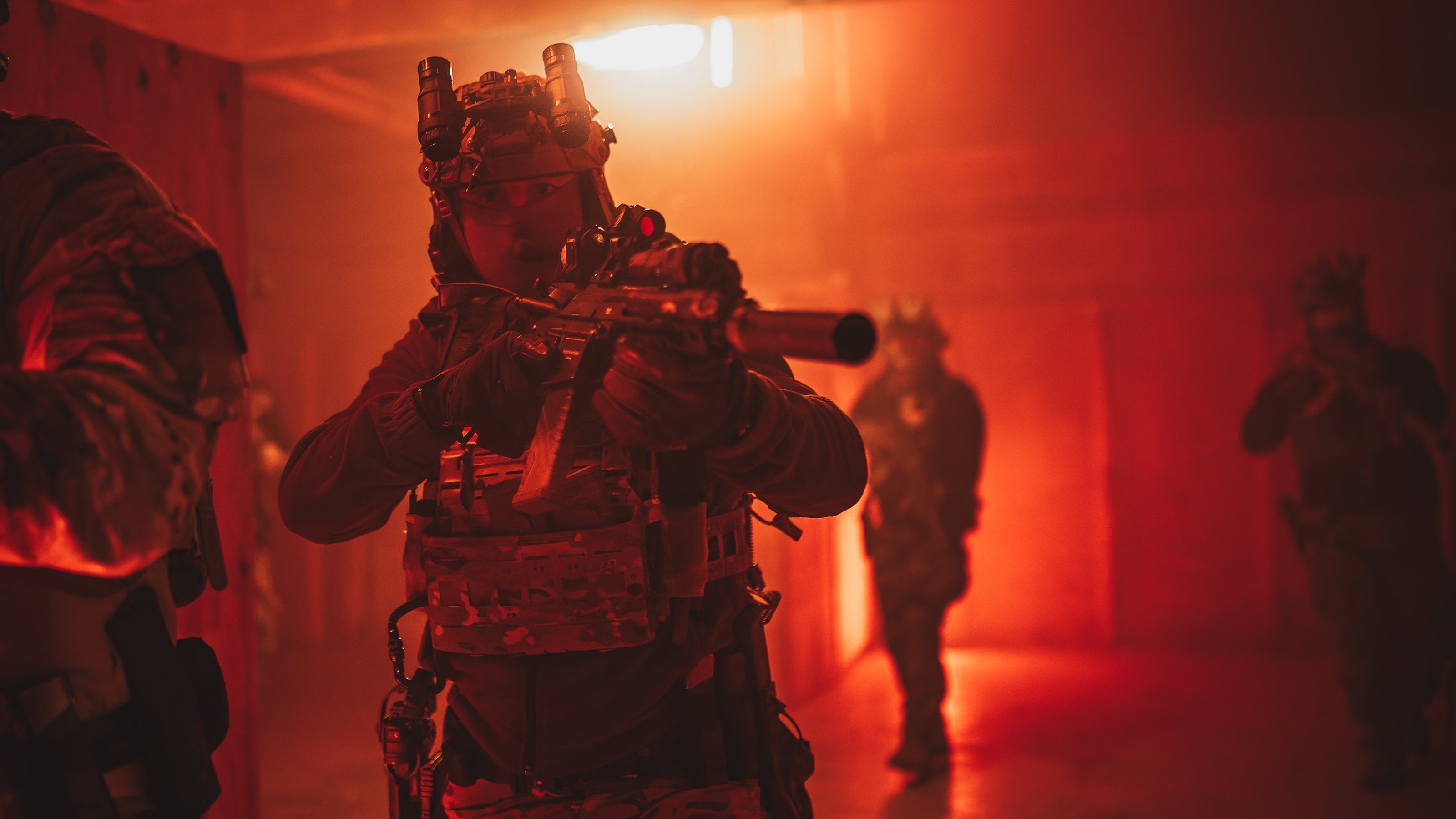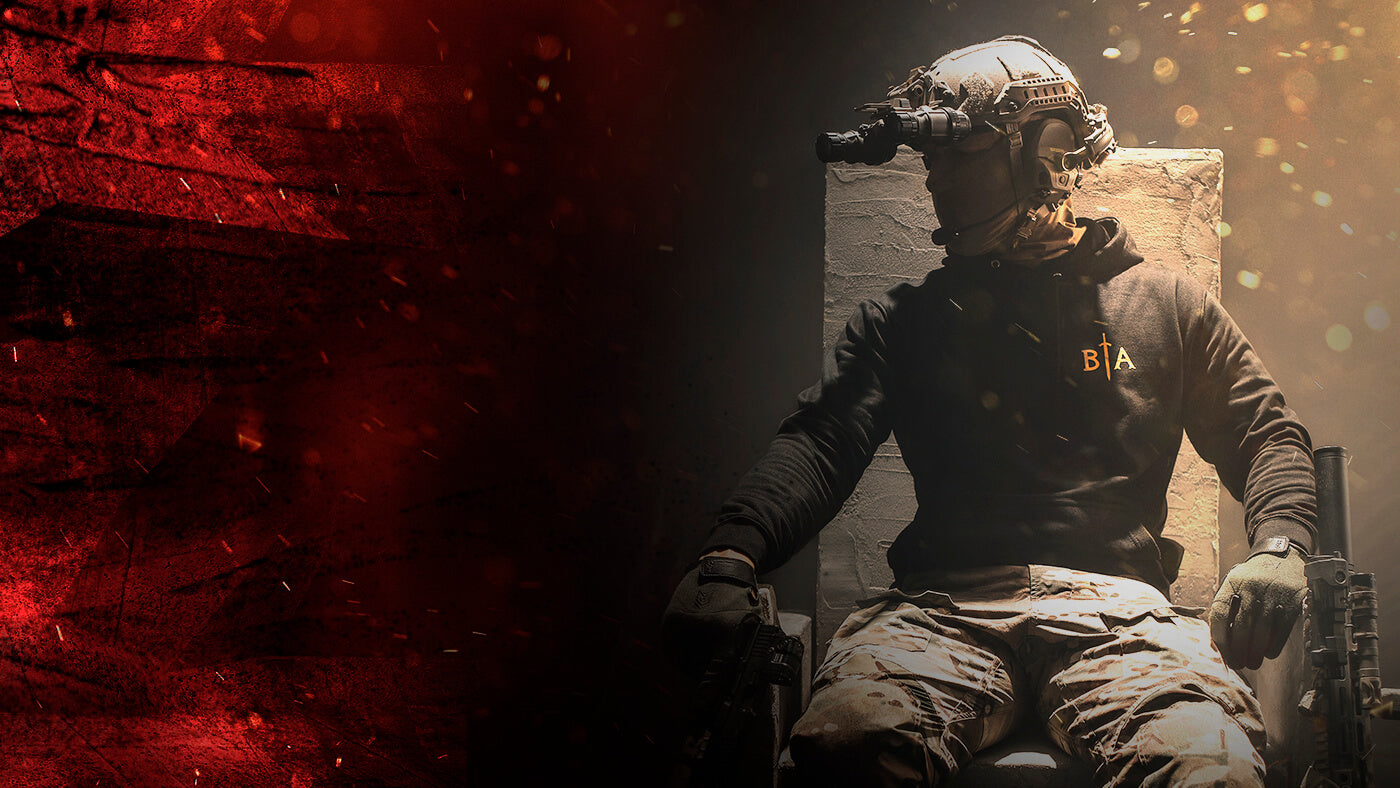The enemy you don't see can be the most dangerous: PTSD. It affects many soldiers, police officers, and everyday heroes—far more than you might think. Here you'll learn what's behind the trauma, what you can do about it, and why you don’t have to fight this battle alone.
What Is PTSD? The Tough Battle After the Mission
PTSD, or post-traumatic stress disorder, is a psychological reaction to extreme experiences that threaten life or are overwhelmingly stressful. In the medical classification ICD-10 (International Classification of Diseases, Version 10), it is described as a “reaction to exceptional stress” — a medically recognized condition. Internationally, it is known as PTSD: Posttraumatic Stress Disorder.
PTSD often develops after trauma such as combat, violence, accidents, or natural disasters — situations where your body and mind go into survival mode.
Commonly affected are soldiers, police officers, firefighters, but also civilians after traumatic experiences. PTSD can affect anyone.
Important to understand: PTSD is not a sign of weakness. On the contrary! It shows that you were strong enough to walk through hell. Now begins the next battle: returning to life.

Symptoms You Need to Know – How PTSD Manifests
PTSD symptoms often sneak into life unnoticed. They're insidious because they don’t always appear right after the trauma and are often misunderstood. The symptoms can be divided into four main areas:
1. Intrusion – the trauma keeps breaking through
- Flashbacks: Suddenly the memory hits you so intensely that it feels like it's happening all over again.
- Nightmares: The events return night after night in your sleep.
- Intrusive thoughts and images: Even during the day, memories invade your mind uncontrollably.
2. Avoidance – Steering Clear of the Trauma
- You avoid places, people, or situations that remind you of the event.
- Typical: no longer going to the gym, avoiding comrades, or skipping certain music or movies.
3. Hyperarousal – The Body Stays on High Alert
- Sleep disturbances, inner restlessness, constant vigilance.
- Overreactions to minor stimuli, outbursts of anger, irritability.
4. Emotional Numbness – Shutting Down to Survive
- Feelings like joy, closeness, or love seem out of reach.
- You feel cut off from yourself and others.
In everyday life, these symptoms can be highly limiting. The earlier a PTSD diagnosis is made in such a situation, the better fears and memories can be managed. Don’t ignore the signs—your fighting spirit is more important than ever.
Real Stories, Real Experiences: How Trauma Shapes Your Life
Behind PTSD are real-life experiences that turn your world upside down. For many soldiers and female soldiers, it begins in war, missions, explosions, or firefights. Others experience violence, assaults, serious accidents, or natural disasters.
Each person responds differently to this extreme stress. Some show symptoms right away, others years later. Some return to normal life as if nothing happened—until the memories strike back out of nowhere.
In some cases, the trauma can lead to a profound personality change that destroys trust or burdens relationships. In the long run, it affects not only your mind but your entire life. Understanding what’s happening is often the first step in regaining control.
Complex PTSD and Long-Term Effects: When the Fight Continues
Not all PTSD cases are the same. Some develop into complex PTSD, which arises from prolonged or repeated trauma — often in captivity, abuse, or extended deployments. It brings more severe symptoms and stronger impairments than the “classic” form.
Relationships are often especially affected: trust becomes difficult, and closeness turns into a challenge. Daily life remains impacted by flashbacks, avoidance behavior, and constant alertness.
The effects of PTSD can last for years. Some sufferers also experience physical symptoms or a changed personality. Healing is possible, but it takes time, patience, and the willingness to take the next step.
Diagnosis and Treatment: Regaining Control
Important: Seeking help is not a sign of weakness, but of courage. Many strong individuals think they have to deal with it alone or they will “fail.” The opposite is true: strength is facing your own story. Talk to your friends, comrades, and professionals who are there to help you! A shared burden is easier to carry — and once again: Carry your brother.
The first step toward healing is getting a PTSD diagnosis. In a conversation with a doctor or psychotherapist, your symptoms, experiences, and course of illness are assessed.
Treatment then begins. The most effective weapon against PTSD is psychotherapy, which helps you process the experiences and regain control. Especially successful is the Eye Movement Desensitization and Reprocessing (EMDR) method, where targeted eye movements “reprogram” distressing memories.
Besides EMDR, talking therapy, behavioral therapy, and physical activity also help. Community support plays a crucial role too: You don’t have to and shouldn’t fight this battle alone.
Out of the Darkness: Strengthening Your Mindset
The first step in dealing with this stress response is acceptance: recognizing that your thoughts, feelings, and reactions are normal responses to extreme circumstances. You are not “broken,” you are human.
To strengthen your mindset, it helps to take back control. Write down what thoughts are troubling you. Talk about them — with comrades, friends, or a therapist. Exercise, routines, and small wins help you reclaim your life.
Never forget: You are not alone. People reading this, and many others you know, are fighting the same battle. Strength begins in the mind and grows through community.

Conclusion: You Are Stronger Than You Think
The post-traumatic stress disorder (PTSD) is caused by extreme trauma and can derail your life. But it does not define you. You are more than your scars. Remember: Courage doesn’t mean having no fear. It means moving forward despite it.
👉 Share this article with a brother who needs it. And if you’re fighting yourself, reach out to your general practitioner or a trauma clinic nearby.
For soldiers and relatives, here are resources from the Bundeswehr:
FAQ – Frequently Asked Questions About PTSD
How long does PTSD last?
The duration of PTSD varies greatly from person to person. Some recover within months, others struggle with the consequences for years. The earlier treatment begins, the better the chances of improvement.
Can PTSD go away on its own?
In rare cases, the symptoms subside on their own, but usually professional help is needed. Without therapy, there’s a risk that the condition becomes chronic and severely impacts life over the long term.
Is PTSD curable?
PTSD is treatable, and symptoms can be significantly alleviated or even completely overcome. However, healing is usually a long process with setbacks and progress, requiring patience and support.
Are there medications for PTSD?
Yes, in some cases accompanying medications like antidepressants are prescribed. They can help alleviate symptoms such as anxiety, sleep disorders, or depression — but they do not replace therapy.
How can I help a friend with PTSD?
Listen without judgment and let them know they are not alone. Encourage them to seek professional help and be patient, even if they withdraw.
Can I work with PTSD?
Yes, many people with PTSD can continue working with the right support and possible workplace accommodations. In some phases, time off or sick leave may be necessary.
What are the consequences of untreated PTSD?
Untreated PTSD can lead to serious psychological and physical problems, including depression, addiction, isolation, and suicidal thoughts. Early treatment can significantly reduce these risks.












2 comments
Mario Wolff-Jauer
Mir geht es nicht gut. Zuviel erlebt, Alpträume, Tag träume, Unsicherheit, manchmal Angst obwohl nichts Gefahr bringt. Ko
Körperliche Schwächen. Seit ca.10 Jahren trockener Alkoholiker
Frank
I was diagnosed with PTSD with related aggression regulation issues and a non specified personality disorder. My treatment was at a forensic psychologist facility, because I was deemed a danger to society. And in that day and time I was. I was planning to kill people who I saw as a threat for a large portion of the day and night. Slept a couple of hours a night and when I woke up, it was game on again mentally. Exhausting to say the least. The forensic psychologist facility treated me with EMDR-therapy and talking sessions. It worked and for two months I was free of my demons. Out of the blue I had a flashback to my trauma and the sh*t started all over again. I can handle it much better now. I am not going back into therapy, because the waiting list is minimal 6 months, So when you are care free count yourself lucky. Me? I fight my demons on a daily basis and till now I win. When I lose I will be an item on the news reels.
Leave a comment